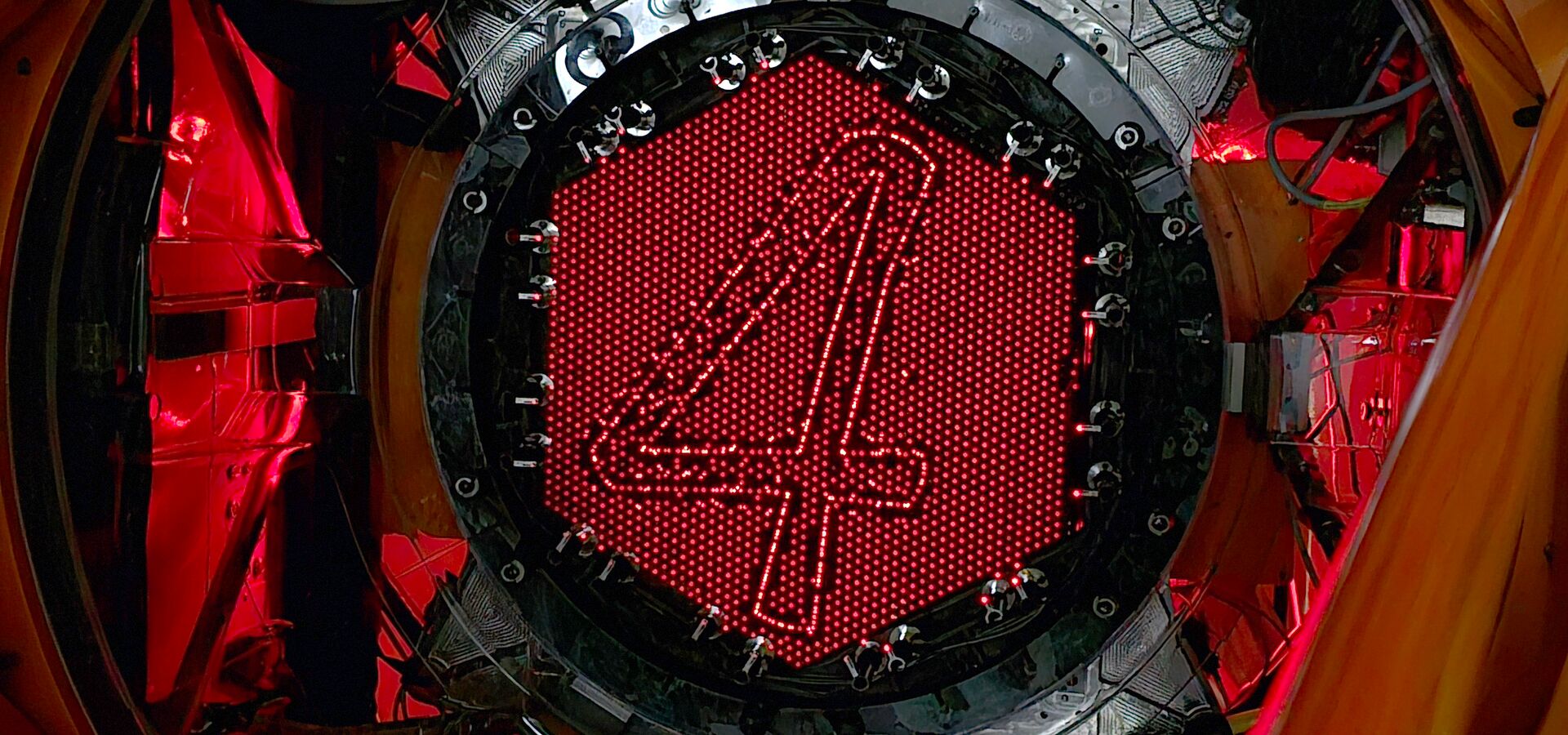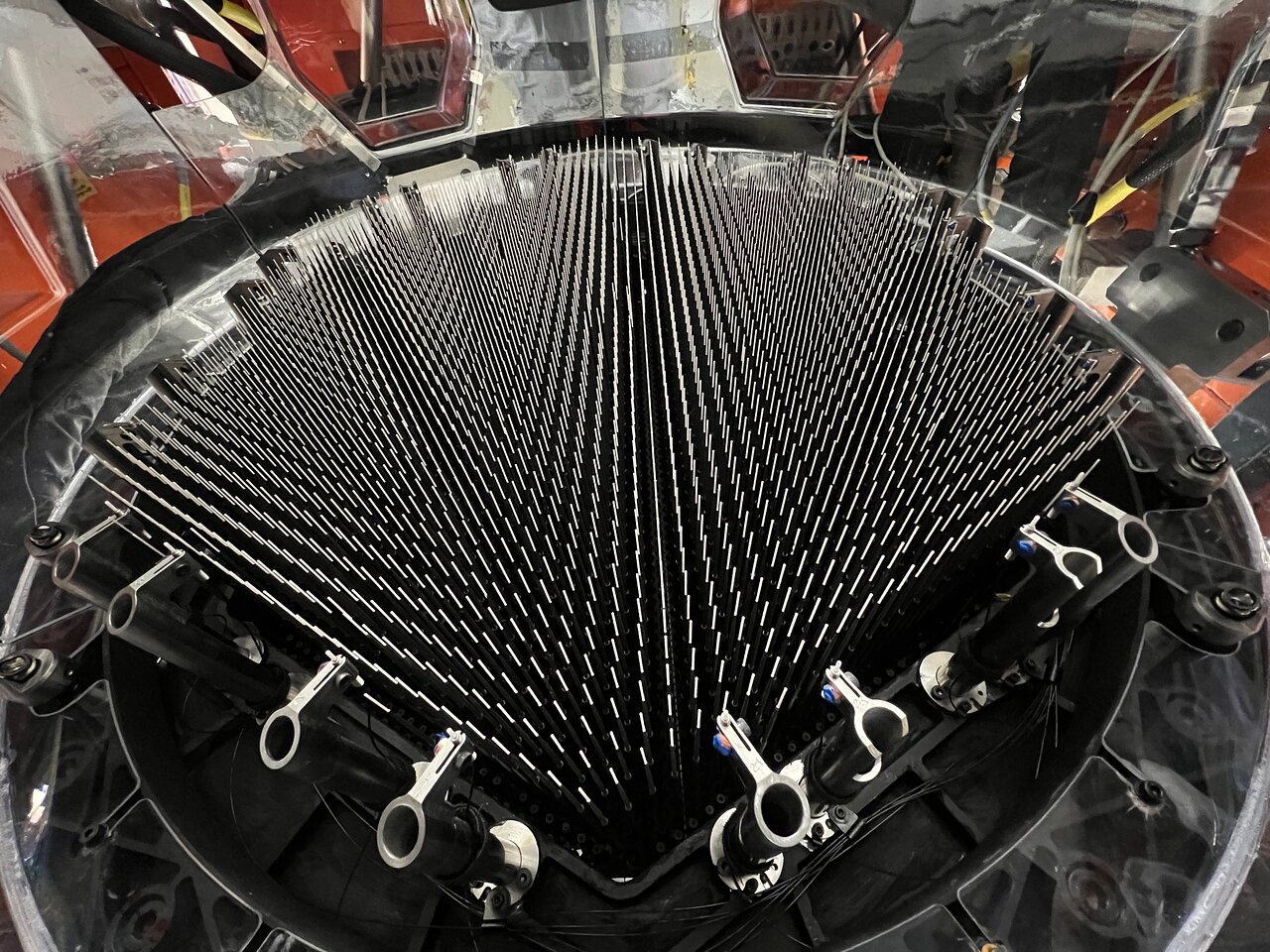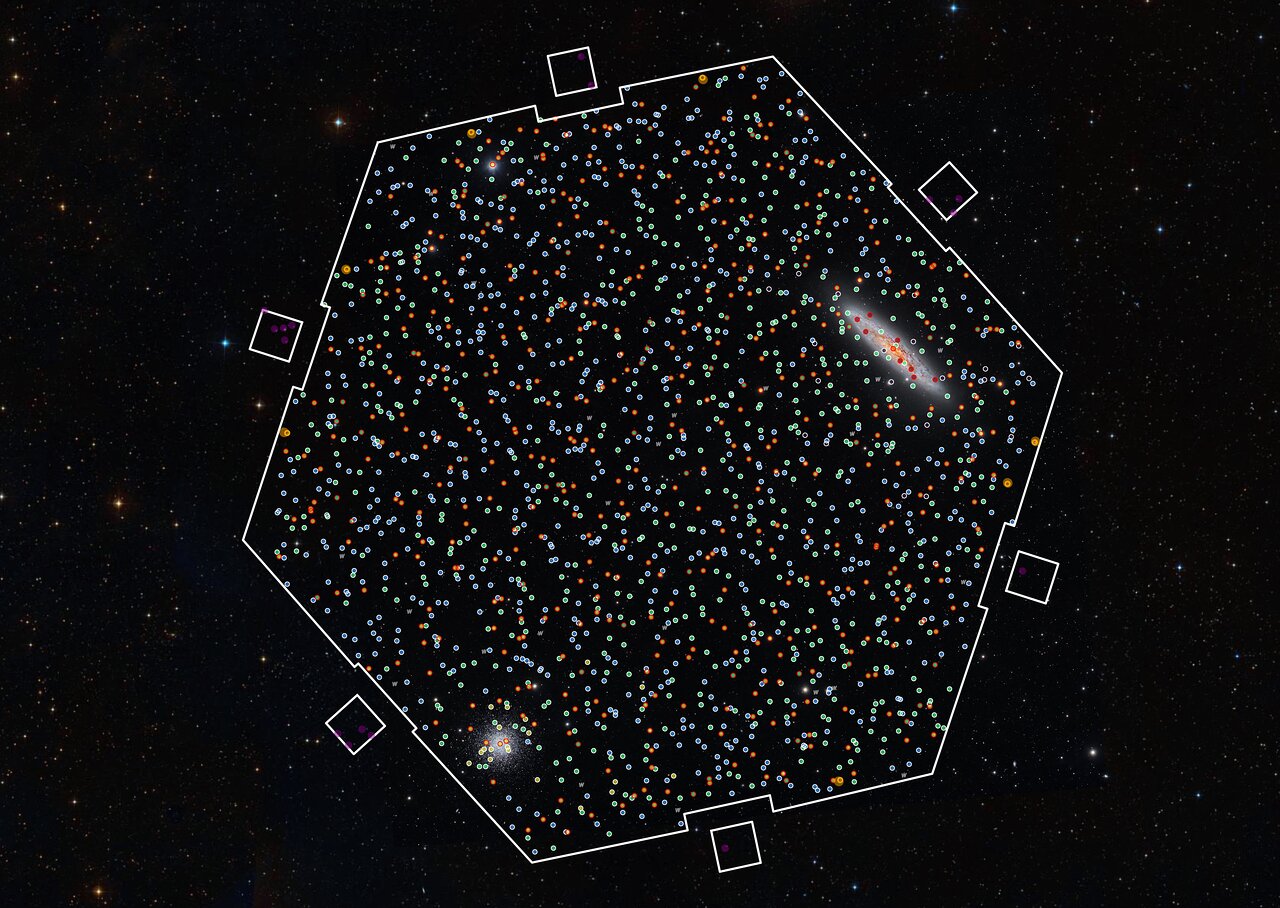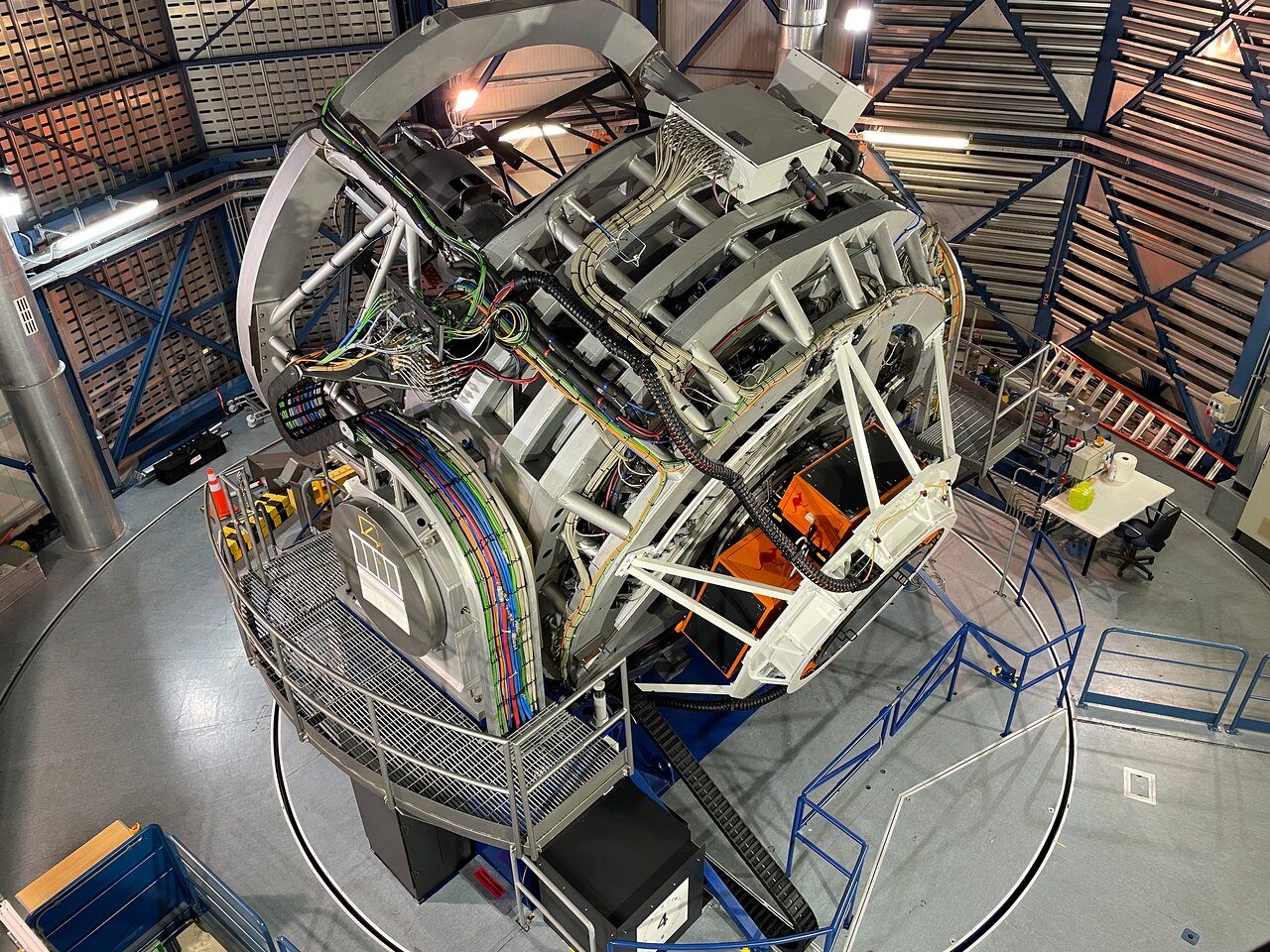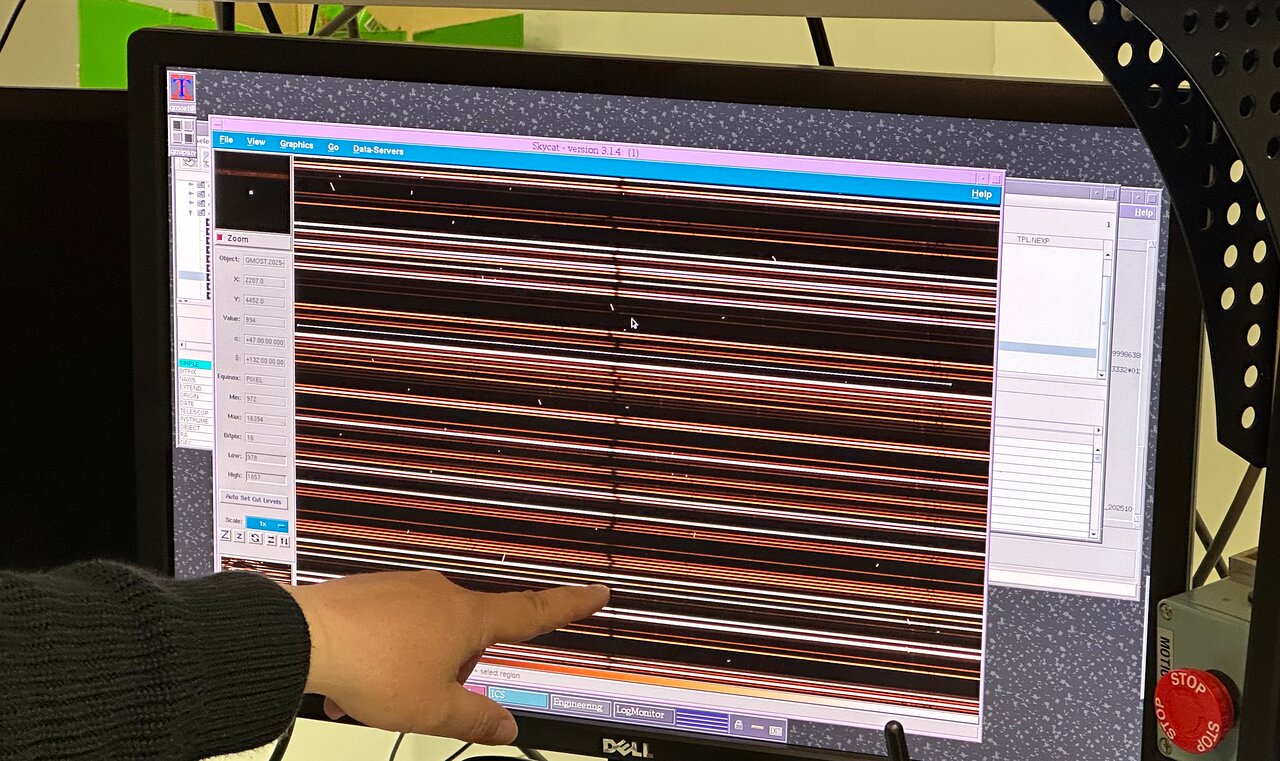- What is 4MOST, a new instrument to survey the southern sky
- The technical challenges of observing thousands of objects simultaneously
- The scientific questions 4MOST will address
There are more stars in our Universe than there are grains of sand on Earth… and boy, do astronomers wish they could study them all. The only problem is the very limited time and resources to do so. Even with telescopes and instruments that can provide images of hundreds of thousands of stars and galaxies in one frame, images only provide limited information about the individual objects themselves. What astronomers need are spectra: cosmic barcodes that tell us about the composition of an object, its speed, and other properties. But how can we take spectra of thousands of objects at once?
One instrument that’s trying to revolutionise this process is the 4-metre Multi-Object Spectrograph Telescope (4MOST). 4MOST is set to be at the forefront of spectrographs that look at multiple objects simultaneously. For the engineers and hundreds of astronomers involved in the project, however, this has been an event many years in the making.
“It takes time for these forefront instruments to be built,” says Vincenzo Mainieri, an ESO astronomer and project scientist working on spectrographs that can observe many targets at once. 4MOST was built by an international consortium led by the Leibniz Institute for Astrophysics Potsdam (AIP), Germany. The last parts of the instrument arrived in ESO’s Paranal Observatory in Chile at the end of July. The instrument is now fully assembled at its final destination: the Visible and Infrared Survey Telescope for Astronomy (VISTA).
To understand what 4MOST does, how it works, and why it is such a game-changer, we’ll dive into the science behind it and what it’s searching for here.
First and 4MOST, what is it?
4MOST is a spectrograph that is designed to collect light from multiple objects and split it into its colour components, which form a kind of barcode, with dark or bright lines depending mostly on the object’s chemical composition. 4MOST in particular observes visible light, with wavelengths similar to what our own eyes can see.
Most spectrographs can only observe one object at a time, and some can observe up to a few hundred, such as FLAMES, also at Paranal Observatory. FLAMES uses optical fibres to collect the light of different objects at once. A robot grabs the fibres and places them at the desired positions, matching the locations of the objects in the sky. With this design, preventing the fibres from bumping into each other limits the number of objects one can observe at once to about a hundred.
In 4MOST, the optical fibres are mounted on spines that are stuck in place, but that can be tilted to point at an object. Thanks to this design, 4MOST will be able to look at and analyse the light of 2436 objects simultaneously. “That’s essentially one of the most powerful things for 4MOST. That you can really do very large spectroscopic surveys,” says Vincenzo. When it is in operation, it will be the largest spectroscopic facility in the Southern Hemisphere.
Many eyes on the sky
4MOST can observe a hexagonal patch of sky that is roughly five times the diameter of the Moon. 4MOST will stare at that one area for about one hour [1] before moving onto the next target patch. In that time, light from each object in the frame will land on one of the magic-wand-looking optical fibres. Each of these 2436 fibres will then transport the light it receives to the spectrographs that will decompose it into its constituent colours. "That we can catch the light that has travelled sometimes for billions of light years into a glass fibre the size of a hair is mindboggling," says Roelof de Jong, astronomer at AIP and Principal Investigator of 4MOST.
Each of the fibres needs to be pointed very precisely at every object that astronomers want to observe within the field of view. There are four cameras mounted on the telescope that look down on the fibres, watching them very closely to ensure they are in the right position. To prevent bumps with fibres when operating, 4MOST is equipped with software that can detect when a potential collision may occur and tell the fibres to stop moving.
Thanks to this many fibres, 4MOST will collect light for over 25 million objects in its first 5 years of surveys, potentially revealing answers to many cosmic questions. There are 18 official planned surveys, under which there are about 144 smaller projects. In other ESO instruments each observation belongs to a specific project, but 4MOST has so many fibres that no single project can make use of all of them at once. At any given time, the fibers will be pointing at objects belonging to different projects, all within the same patch of the sky –– something never done before at ESO.
One of the individuals responsible for coordinating all the planned surveys is Ása Skúladóttir, an astronomer at the University of Florence and Chair of the Science Coordination Board. To plan and optimise where 4MOST will look in the sky and what objects it will observe at any moment, Ása needs to work with all the teams to compile a list of all the objects they want to see. “For any given pointing, everyone puts their targets in a soup, and we try to optimise which targets go at which time,” she says.
Once they have the collection of stars and galaxies that need to be observed, they then simulate the best way to move the telescope across the sky. “It’s not an easy thing to do, but we have an amazing team that is doing the survey simulations, and we’re actually now getting results that are promising,” she says.
The case(s) for 4MOST
But what are some of the results that 4MOST is searching for? One of the key questions revolves around our galaxy and its evolution. “One of the pressing needs for 4MOST exactly at this moment, was Gaia,” says Ása. Gaia, run by the European Space Agency (ESA) for over a decade, mapped the positions and distances of more than one billion stars in the Milky Way before ending its task earlier this year. “Gaia is one of the most successful missions in stellar physics and galactic archaeology that has ever been done.” It has created the largest map of stars in our galaxy to piece together the history of star formation and galactic mergers that made the Milky Way what it is today.
“What we are missing [from Gaia, however,] is the radial velocity, meaning the velocity of the star to and from us,” explains Ása, as well as the chemical information. “All this other information, we will derive from the spectra for 4MOST,” says Vincenzo.
With this more detailed look into stars, astronomers will be able to answer questions such as do stars always form in clusters? Can they form singularly? And where do they form in galaxies? “4MOST will be the first instrument to really address these questions in the way that they have been thought of for the last 10 years,” says Jakob Walcher, astronomer at AIP and 4MOST Operations Manager.
Another exciting topic that the instrument will be dipping into is the world of Active Galactic Nuclei (AGN) –– the energetic cores of many galaxies, powered by supermassive black holes. There are hundreds of thousands of AGNs that have been observed in X-rays by eROSITA, an instrument onboard the Russian-German Spectrum-Roentgen-Gamma satellite. As is the case with Gaia, “It’s a very logical next step,” according to Ása, that 4MOST follows up on many of the objects that were observed with eROSITA. “We have a lot of different telescopes, and there’s a reason for it, because they all have their strengths, and then when we combine them together, we get much, much better science,” she says.
Of course, these larger surveys are expected to have a great impact, but they’re not the only projects getting data from 4MOST. “There are many big surveys, but there are also small surveys, and there’s a lot of them, and they’re all going to do big science in their own right,” says Jakob.
Being at the 4-front of innovation
Whilst being the biggest spectroscopic facility in the southern hemisphere, 4MOST is also designed to run automatically. Usually, when it comes to collecting data from these instruments, there is a person responsible for collating and checking the quality of the data as it comes in. But because there will be so many spectra collected every night for five years, it needs to be an automated process. Jakob is the person leading the charge for this to happen, with a team of experts in astronomical institutions all over Europe and Australia.
The software that will automate this process is being tested in stages, starting with one night whilst being monitored and working up to eventually running by itself. When it comes to being prepared for what could go wrong, Jakob says that he isn’t sweating over the little things. “The biggest worry I have is not actually the small bugs, it’s rather a misunderstanding in concept.” He explains that the concern for the final stage is that the team have a basic idea of how the algorithm should work, but then realise that there is a fundamental flaw in what they thought was actually occurring.
When 4MOST begins its surveys, the astronomers will be able to start analysing their data every three months. There will also be public data releases, with a total expected five releases for the first five years of science operations, “and that is when the spectra will become available to everyone on the planet,” says Jakob. “That is a wonderful tradition of astronomy, that the data are public,” he says.
Beyond the 4MOST first light
On October 18 2025, 4MOST directed its thousands eyes to a large patch of the sky containing the Sculptor galaxy and the NGC288 globular cluster, among other astronomical objects. The excitement in the control room at Paranal was palpable as the 4MOST team and guests observed thousands of spectra appear on the screens. "It is incredible to see the first spectra from our new instrument," says Roelof. "An incredible feat only made possible by an incredible development team."
Given the complexity of the instrument and the way it will be operated, the team still needs a few months to extensively test the different subsystems before the instrument can officially start charting the skies. Once it's up and running, it will change our understanding of the Universe in ways we may not even anticipate. "Can’t wait till having the system operating every night,” concludes Roelof.
[1] The same area will be re-observed several times, reaching total exposure times between 1.5 and 60 hours, depending on the target.
Links
Biography Amy Briggs
Amy is a recent science communication graduate from the Australian National University. Before coming to learn from the COMMS team at the ESO, she worked for the Australian Academy of Technological Sciences and Engineering (ATSE) as a Communications Coordinator and as an Editorial Coordinator for the youth magazine Careers with STEM.
She has also written for the Sunday Space column in The Canberra Times, ABC Science, and the CSIRO’s Double Helix magazine.
She has a passion for storytelling, reading, and unihockey.


